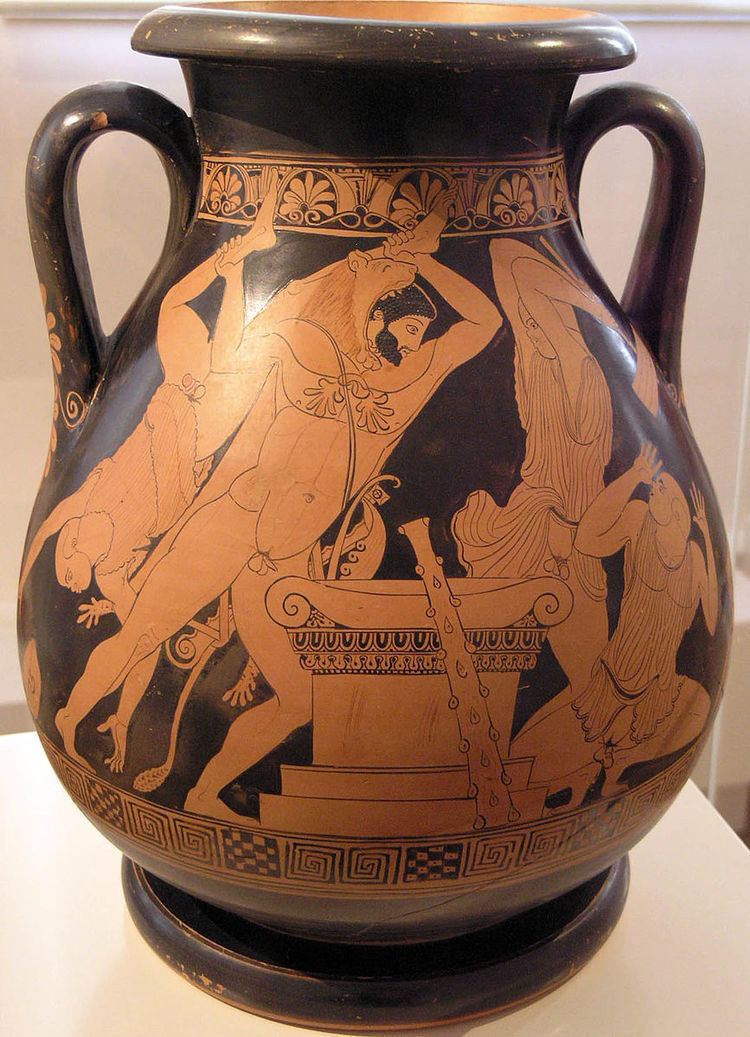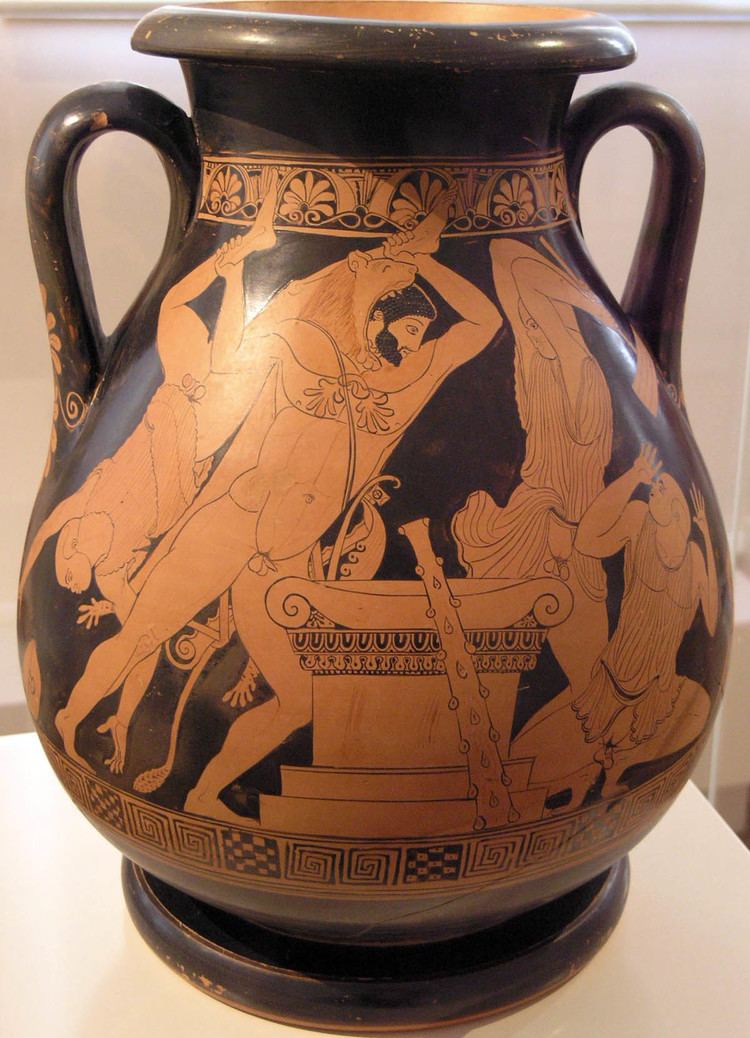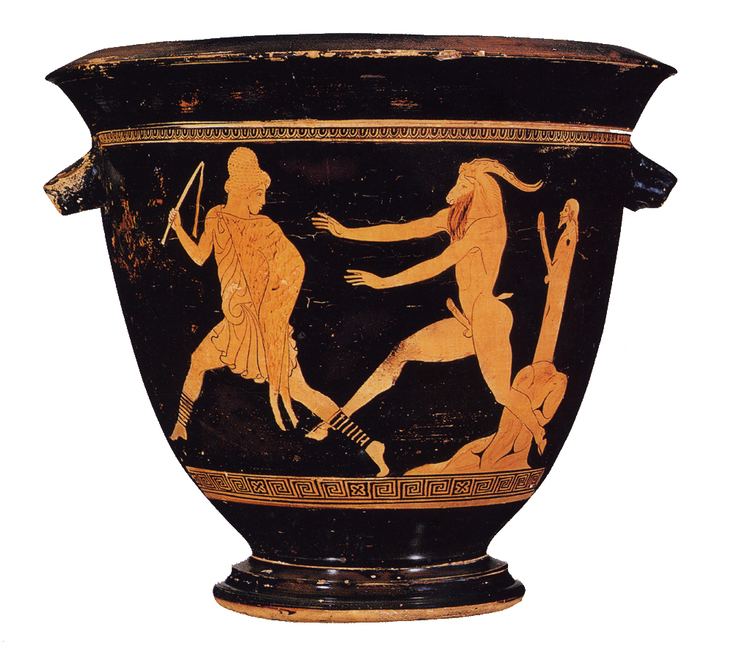Name Pan Painter | ||
 | ||
#VaseVlog2018. No2, Perseus and Medusa by the Pan Painter
The Pan Painter was an ancient Greek vase-painter of the Attic red-figure style, probably active c. 480 to 450 BC. John Beazley attributed over 150 vases to his hand. His name-vase is a bell krater in Boston depicting Pan pursuing a goatherd.
Contents

Beazley first described the Pan Painter in 1912:

"Cunning composition; rapid motion; quick deft draughtsmanship; strong and peculiar stylisation; a deliberate archaism, retaining old forms, but refining, refreshing, and galvanizing them; nothing noble or majestic, but grace, humour, vivacity, originality, and dramatic force: these are the qualities which mark the Boston krater, and which characterize the anonymous artist who, for the sake of convenience, may be called the 'master of the Boston Pan-vase', or, more briefly, 'the Pan-master'."
Beazley identified the Pan Painter as a pupil of Myson, teacher of the Mannerists, a term applied (often pejoratively) to a group who used "mannered" depiction of figures for decorative effect. The Pan Painter's restrained use of ornament and his coherent continuous compositions, however, set him apart from the Mannnerists. His assured outlines and deft handling of space and volume are "characteristic of the best of the Archaic period".
